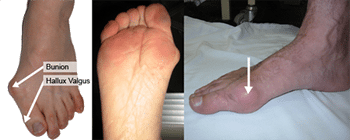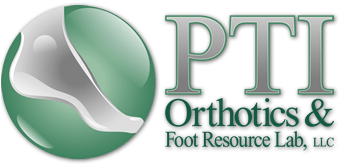Hallux Valgus Condition

With hallux valgus, the foot is excessively pronated. The first toe angles toward the second toe, the medial longitudinal arch is flattened, and the transverse metatarsal arch is lowered. The first toe can angle towards and under the second toe causing a hammer toe, which can lead to problems with shoe fit. Shoes are available to address this problem, however, some people continue to wear aggravating shoes, either because of occupation or they find the shoes that will accommodate their problem socially unacceptable. Low-heeled shoes with a firm heel counter and a broad, deep toe box will work the best. Heat moldable shoes and spandex shoes are available that will accommodate many forefoot deformities and are much less expensive than custom shoes. A custom orthotic, to address underlying biomechanics with good medial longitudinal arch support and transverse metatarsal arch support is the best treatment. Appropriate stretching exercises must also be done, as excessively tight muscle groups that are common with this condition can work directly against the medial longitudinal arch. Ask your health care professional what will work best for you.
Shoes are available to address this problem, however, some people continue to wear aggravating shoes, either because of occupation or they find the shoes that will accommodate their problem socially unacceptable. Low-heeled shoes with a firm heel counter and a broad, deep toe box will work the best. Heat moldable shoes and spandex shoes are available that will accommodate many forefoot deformities and are much less expensive than custom shoes. A custom orthotic, to address underlying biomechanics with good medial longitudinal arch support and transverse metatarsal arch support is the best treatment. Appropriate stretching exercises must also be done, as excessively tight muscle groups that are common with this condition can work directly against the medial longitudinal arch. Ask your health care professional what will work best for you, and PTI Orthotics can accommodate you accordingly.
